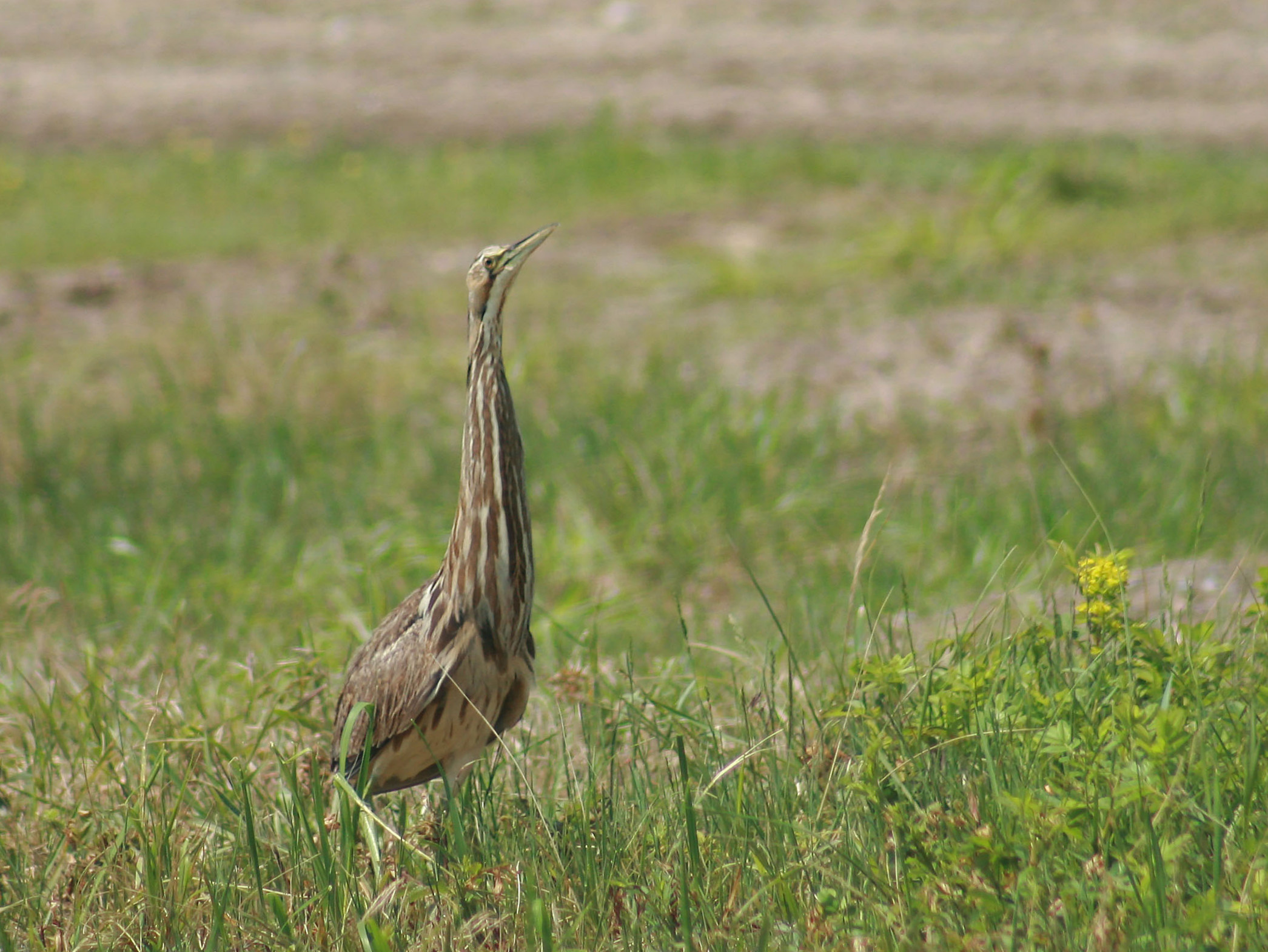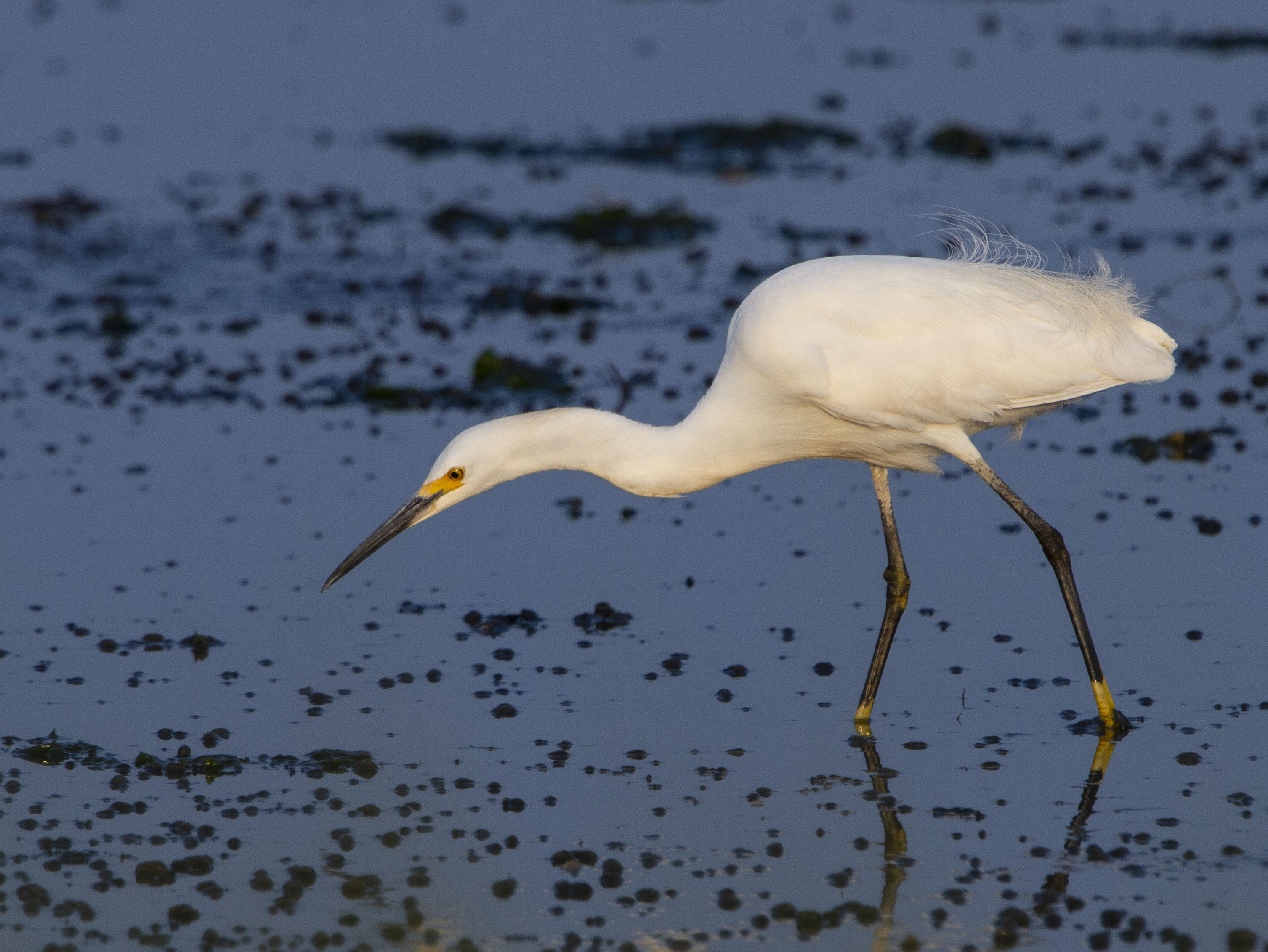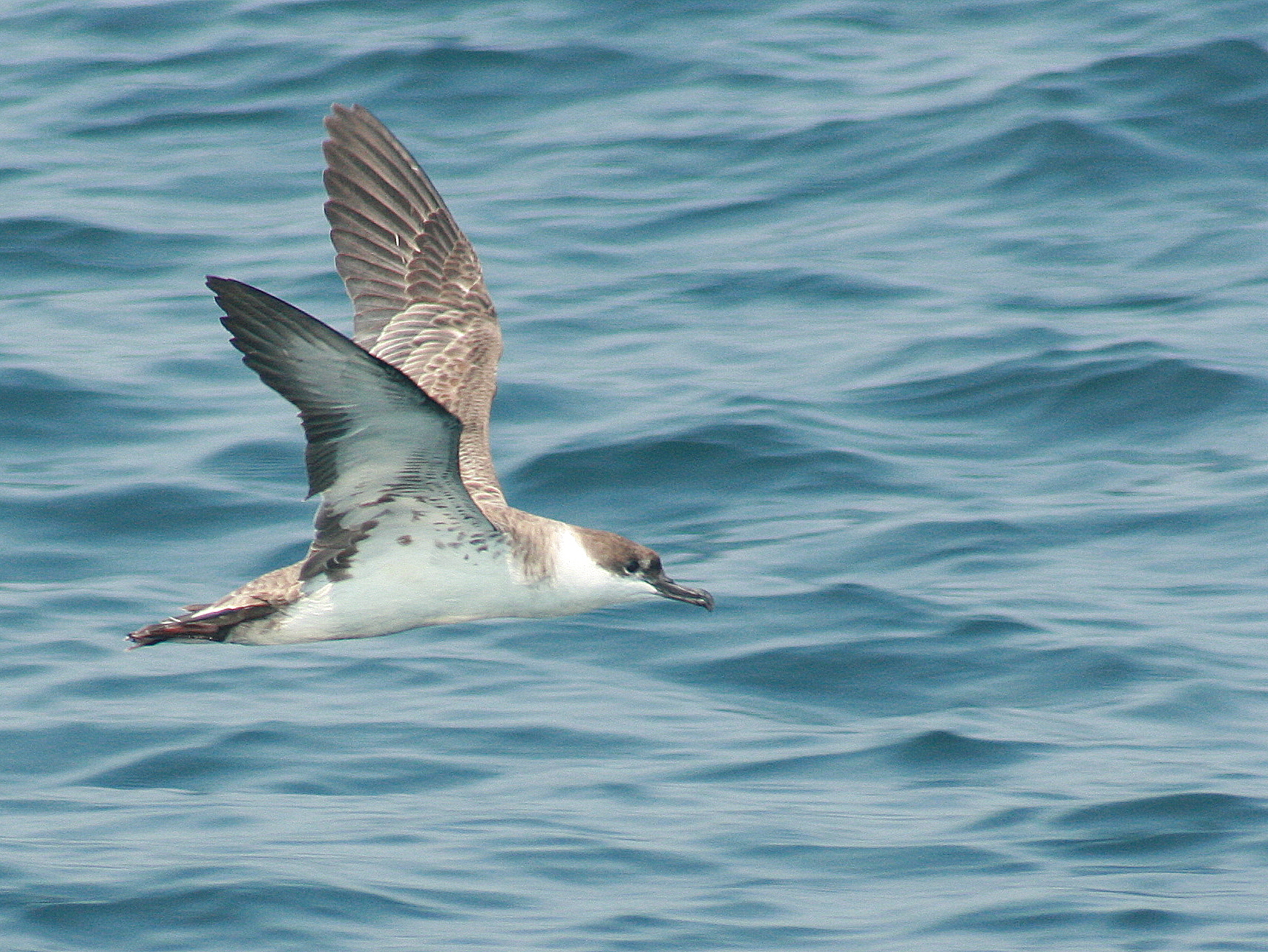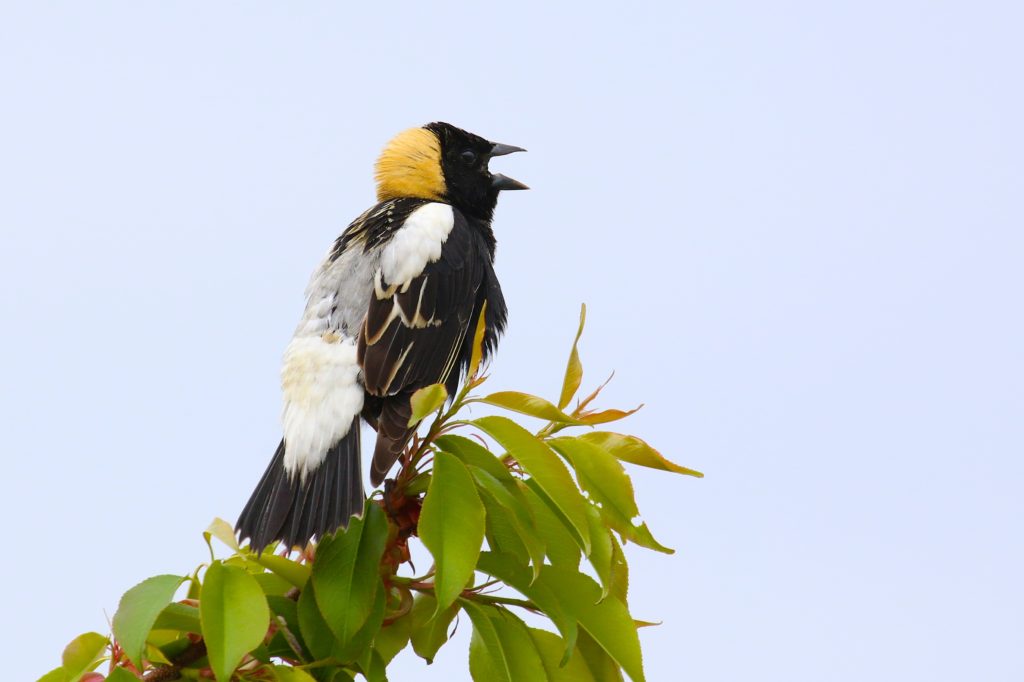If you’ve never heard a male Snowy Egret nasally bubble away at a rival, well, you are in for a treat.
Using Xeno-canto, an online library of bird sounds to which anyone can contribute, we’ve chased down the strangest recordings of species native to Massachusetts. Hit the play button in the clips below to check them out!
In the first half of this post, we’ll run through some strange bird noises that are easy to go out and hear for yourself.
We’ll review even weirder noises in the second half, but ones that are hard or impossible to experience in Massachusetts. This second section is devoted to noises that migratory birds make on their breeding grounds far to the north, or in other parts of their range.
Part 1: Sounds You Can Hear in Massachusetts
1. American Bittern:
Distant relatives of herons, bitterns make a booming, gulping noise while pumping their necks up and down, giving them the nickname “thunder-pumper.” Hit the play button in this clip and turn up the bass!

An American Bittern stands tall among marsh grasses. Photo (c) William Freedberg
2. Bobolink:
A once-common sound of farm fields and grasslands, the Bobolink’s song incongruously brings to mind R2-D2 from Star Wars. These grassland birds abounded during the height of low-impact agriculture in New England, but farmland loss, development, intensive harvesting and pesticide use have reduced their numbers dramatically. With recent conservation programs like the Bobolink Project, which pays farmers directly to protect grassland birds, this species’ future is looking a little brighter.
3. Veery:
Veeries are drab, russet-colored thrushes with an outsized voice. They can produce several clear tones at once, and almost sound like they are harmonizing with themselves. While uncommon near developed areas, this birds are one of the most numerous summer birds of deep forest far from the coast.
4. Barred Owl:
Owls don’t just hoot—they also can yelp, screech, and shriek. This Barred Owl transitions from a high-pitched wail (which may be a regionalism or an alarm call) into its lower and more commonly-heard “who-cooks-for-you-all.”
5. Common Loon:
Perhaps the most iconic sound on this list, the wail of the Common Loon is practically synonymous with the wilderness of northern New England (although they also breed in central Massachusetts). In this recording, listen for their yodels at the beginning, a loud wail at 0:31, and keening starting at 0:09 and 0:58.
Part 2: Sounds Massachusetts Birds Make Elsewhere
6. Snowy Egret:
This might be the weirdest one on the list. Graceful Snowy Egrets are common in New England saltmarshes, but rarely vocalize away from rookeries. At rookeries, however, they’re known for a cartoon character-like and downright hilarious.

A Snowy Egret patrolling the shallows for prey. Photo (c) William Freedberg
7. Pectoral Sandpiper:
Pectoral Sandpipers and many other species of shorebirds seem like much different animals on their breeding grounds than on the east coast during migration: they become quite fearless and territorial, their plumage takes on dramatic patterns, and they sing with a surprising variety of chortles, whoops and whistles. This Pectoral Sandpiper’s song sort of sounds like… somebody blowing bubbles?
8. Turkey Vulture:
Turkey Vultures almost never vocalize. When they do, all that comes out is a raspy, sizzling hiss, like adding water to a hot pan.
9. Atlantic Puffin:
While puffins are uncommon winter visitors to the waters off MA, you can easily hear their characteristic grumbles on breeding colonies in Maine.
10: Great Shearwater:
These pelagic, albatross-like birds are frequently encountered on whale watches and offshore boat trips in Massachusetts waters. While silent at sea, they’re… really quite vocal on breeding colonies, where they sound like rubber chickens brought to life.

A Great Shearwater, true to its name, glides tight to the waves. Photo (c) William Freedberg
These are just our picks for the strangest noises made by local birds… but there are so many other options, it’s hard to winnow them down to just a few!
What would make your top 10? Let us know in the comments!



Wonderful recordings. Thank you. Suggest Eastern Towhee.
Reply
Wondeful! Thanks. Suggest: Eastern Towhee (seem to be more common recently, starting early in the morning).
Reply
That was wonderful! I loved the Snowy Egrit, Puffin,Turkey Vulture , and Great Shearwater! Thanks for those recordings!
Reply
I agree with Kathy. I’d like to hear the sounds of more common birds/visitors to our backyards, so better able to identify them by their sounds.
Reply
this is great!
would love a resource for common MA birds – perhaps specific to habitats: forest/woodlands, fields, lakes/rivers. coastal.
one that sounds so prehistoric ~ Great Blue Herons.
Reply
Woodcock – big nasal buzz.
The puffin sounds like a chainsaw being revved up ?
Reply
Thank you for this wonderful collection. We were especially moved by the song of the veery, which we always hear when at our cottage at Lake Willoughby, in Vermont’s Northeast Kingdom. We never see them, their descending notes reaching us from the forest across the meadow,
Reply
This is awesome. Please do more! Perhaps some of the more common birds in Massachusetts? That way we might be better able to identify the ones we hear in our backyards!
Thanks so very much!
Reply
Yep. That sampling was reeeeallllly good. Worth the time. Thanks!
Reply
The cowbird!! They sound like water bubblers.
Reply
Great to hear that Marj Rines is still so active in the birding community! She used to live in the same Arlington neighborhood as my best friend. I know you’re focusing on “crazy bird noises” but I just have to chime in that I feel hermit thrushes have the most beautiful song! I hear their ephereal flute-like sound in the woods of Wellfleet. First time I heard them, I thought I must be hearing a fairy of the woods playing a glass flute!
Reply
I always thought Red Bellied Woodpeckers have a pretty interesting call!
Reply
Thank you for this lovely diversion from my work day!
Now back to work, but I won’t moan too much, lest I start sounding like an Atlantic Puffin.
Reply
Also North Central Massachusetts. All night, every night, up high in a maple tree, starting probably in May or June and still going strong in September, we hear a very loud CH-CH, CH-CH. Sometimes it’s even “CH-CH-CH.” Never takes a break until the sun comes up. Any ideas?
Reply
Look up sounds made by Gray Tree Frog.
Reply
It’s a green insect called a Katydid.
Reply
We hear a bird–on a regular basis–in the woods of North Central Mass. that sings a perfect musical scale, low to high notes, in quick succession… I can mimic it if I whistle “do-re-me-fa-sol-la-ti-do” really fast… We are stumped as the guides are no help. Please help!
Reply
Hi Marie,
Marj Rines, our Wildlife Information Line specialist, says that from your description of the song it sounds like a Field Sparrow, but they aren’t likely to be in the forest. Try listening to Field Sparrow’s song and see if that matches. Otherwise you can try to record the song and send it to Marj at [email protected].
-Margo
Reply
The William Freedberg can also be sometimes observed, rising from his nest around 4 a.m. or so, to search out the presence of any resident ornithological oddities or serendipitous avian songsters.
Reply